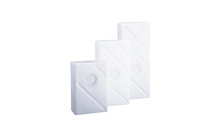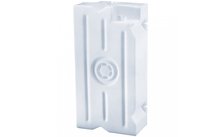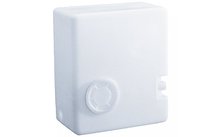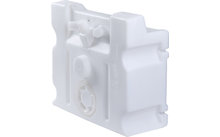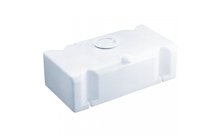Fresh Water Tanks
A dependable on-board supply starts with Fresh Water Tanks you can trust. Choose food-safe, leak-proof designs sized to your crew and travel style for clean water on every trip. From compact 20 l units to spacious 100 l solutions, find the right fit for caravans, motorhomes and campervans.
Read more about Fresh Water Tanks ...
Fresh Water Tanks
Keep your on-board supply clean and reliable with Fresh Water Tanks designed for caravans, motorhomes and campervans. From compact 20 l options to spacious 100 l solutions, choose a food-safe tank that fits your layout, travel style and group size for hassle-free touring.
Fresh Water Tanks For Motorhomes And Caravans
Match tank capacity to the number of travellers and trip length. Weekend getaways often work with 20–40 l, while families or longer tours benefit from 60–100 l. Ensure the tank suits your vehicle’s layout and allows easy access for filling, inspection and cleaning. Well-placed tanks improve weight distribution and reduce sloshing on the move.
Capacity And Sizing Guidelines
As a rule of thumb, plan 8–12 l per person per day for cooking, washing and short showers. Balance comfort with payload limits to avoid exceeding the maximum authorised mass. If in doubt, choose a mid-size tank and add a jerrycan for peak demand.
Compatibility With Pumps And Hoses
Check inlet and outlet diameters, vent positions and thread types so your submersible or pressure pump, hoses and fittings connect securely. A well-matched system ensures steady flow and reduces risk of leaks.
Food-Safe Materials In Fresh Water Tanks
Our tanks are made from robust, food-safe plastic to keep water quality high over time. Smooth inner walls minimise deposits, while sturdy shells resist vibration on rough tracks. Many models accept internal baffles to reduce water movement and noise.
Shapes And Installation Positions
Choose flat, narrow or wheel-arch shapes to make the most of under-seat lockers, rear garages or floor spaces. Space-saving designs help preserve storage while keeping service points accessible.
Leak-Proof Lids And Fittings
Wide inspection lids simplify cleaning and tablet dosing. Secure caps, gaskets and threaded fittings keep your camping water supply sealed during driving and refilling.
Fresh Water Tank Accessories And Maintenance
Complete your setup with fillers, vents, level gauges and strainers for efficient daily use. Regular maintenance keeps taste and odour in check and extends component life throughout the season.
Filling, Venting And Level Monitoring
Use suitable filler hoses and funnels to prevent kinks and contamination. Correct venting improves fill speed and prevents vacuum during pumping. A level gauge or sight strip helps you plan refills on the road.
Cleaning And Water Hygiene
Rinse the tank before first use and between trips. Periodically sanitise with approved cleaners or conservation products to keep drinking water hygienically clean. Always store tanks dry when not in use.
Choosing The Right Fresh Water Tank Size
Short trips, campsites with facilities and solo travel favour smaller tanks to save weight. Wild camping, family holidays or shower use may require larger capacities. Consider the space available and the route’s refill opportunities.
Weekend Trips Vs Long Tours
For weekends, a 30 l tank plus a collapsible canister often suffices. For multi-week touring, 70–100 l gives flexibility between refill stops and supports on-board showers.
Weight Distribution And Payload
Install tanks low and near the axle to improve handling. Account for water weight when calculating payload: 1 l equals approximately 1 kg, so a full 80 l tank adds about 80 kg.
Tips For Installing Fresh Water Tanks
Secure the tank with straps or brackets to prevent movement. Use food-grade hoses, seal all joints carefully and pressure-test the system before travel. Keep inspection points reachable for quick checks.
Securing The Tank And Fixings
Anti-slip pads, aluminium rails and tension straps help hold the tank firmly on rough roads. Protect hoses from chafe with grommets where they pass through panels.
Winterising And Storage
Before frost, drain the tank, pump and hoses fully. Leave inspection lids open to ventilate, then store with caps loose. A quick flush in spring gets you ready for the season.



